7 Most Peaceful Small Towns On The Chesapeake Bay
The Chesapeake Bay, located in the Mid-Atlantic region of the US, is well known for its historic charm and working waterfronts. In the bay itself, visitors can enjoy wildlife watching, kayaking, and fishing. There are also several museums and parks to visit, as well as a vibrant local food scene that offers an array of incredible seafood options.
Along the Chesapeake Bay shoreline, things slow down. The small communities here are used to a quieter side of the bay and of life in general. These towns manage to retain a sense of calm, even during peak season, offering visitors a much-needed time out. If you want to relax and unwind and explore what Chesapeake Bay has to offer at your own pace, the following towns are just the place to start.
Poquoson, Virginia
Poquoson is a quaint town on the Virginia Peninsula. The town offers access to tranquil tidal marshes and river inlets. You can also reach Chesapeake Bay from here, which makes the town an ideal base for exploring nature and the outdoors. You can also paddle along in a kayak along the bay shoreline and watch the water birds in the marsh grass. Boating is also an option for those who want to explore deeper waters and coves.
The nearby Plumb Tree Island Wildlife Management Area is another peaceful spot to see marsh grasses and the feeding habits of bay fish and birds. Back in town, the Poquoson Museum offers a swamp trail, the Poquoson Museum Marsh Trail, where you will find fiddler crabs and wetland wildlife. The museum also includes a Learning Garden that explains the community’s connection to Chesapeake Bay.
St. Michaels, Maryland
St. Michaels sits on the banks of the Miles River, which flows into Chesapeake Bay. This pretty town has a harbor and waterfront setting that invites people to sit down and relax with a glass of wine. If you visit during the last week of April, get your tickets for the annual Winefest and spend some time tasting and discussing taste profiles.
You will have to finish your wine before heading to the Chesapeake Bay Maritime Museum. The museum is located on the waterfront, where it displays historic boats and offers visitors the opportunity to climb the Hooper Strait Lighthouse. You can even watch traditional Chesapeake Bay boats being restored in the museum’s boatyard. End your day with a scenic cruise of the bay, while looking out for wildlife in and out of the water. You can choose between a history cruise, a kayaking tour, or a sunset sail.
Havre de Grace, Maryland
The waterfront town of Havre de Grace lies at the head of the bay. The town is well known for the scenic Havre de Grace Promenade, where visitors can sit and take in the views of the Susquehanna River and the bay. Most people take the opportunity to walk or jog on the promenade or just enjoy a good cup of coffee. The promenade passes the Concord Point Lighthouse before linking to the downtown attractions. The lighthouse is one of the oldest on this side of the country and offers seasonal tours.
In Susquehanna State Park, a few minutes from Havre de Grace, you can hike the trails through the woods or spend a lazy day fishing in the river. There are also picnic areas available, making it a great choice for a day out. Back in Havre de Grace, you can learn more about the town’s maritime history at the Havre de Grace Maritime Museum or find out more about waterfowl decoy carving at the Decoy Museum.
Onancock, Virginia
Onancock is a sleepy small town on the eastern shores of the bay. It is also just a few miles away from the disappearing island of Tangier in Virginia (by water). The name Onancock is believed to mean "foggy place" in the Algonquin language, and the town lives up to that name every time thick fog rolls in over the Onancock Creek. Other than being foggy, the town is also artsy, with several galleries in the downtown area. A highlight is Bizzotto’s Gallery Café, which combines an Italian restaurant with an art gallery.
After you visit the café and the Federal period house museum, Ker Place, walk south for one block to the Historic Onancock School. Here, you can walk the Nature Trail that stretches along the creek. You can also learn more about the history and culture of the local watermen at the Eastern Shore Watermen’s Museum and Research Center.
North Beach, Maryland
North Beach is the perfect serene coastal getaway. The beach itself is tiny but gorgeous and great for families who want to spend a tranquil day in the water. The town sits on the western shore of Chesapeake Bay and is known locally as the "jewel of the bay." The town’s pier and boardwalk houses shops and restaurants, while the Wetlands Overlook Park and North Beach Nature Center are the place to be for green spaces and wildlife.
Stop by the Bayside History Museum to see the Chesapeake Beach Amusement Park exhibit or whale bones and shark’s teeth in the paleontology section. North Beach also offers movies on the beach, a craft beer festival, and a seasonal farmer’s market on Saturdays from April to October.
Cape Charles, Virginia
Cape Charles is located on the eastern shore of the bay and boasts some of the most beautiful beaches in Virginia. Cape Charles Beach is great for soaking up the sun, taking a dip in the warm seawater, or just going for a long walk on the sand. There is more natural beauty on display at the nearby Eastern Shore of Virginia National Wildlife Refuge and Kiptopeke State Park. These parks also offer plenty of space for hiking and fishing.
You will find historic buildings downtown as well as preserved Victorian homes. You can join a walking tour to see most of these buildings courtesy of the Cape Charles Museum. Or you can join the Summer Concerts in the Park Series or the annual Cape Charles Art Walk to immerse yourself in the local arts and culture.
Easton, Maryland
Easton lies along the Choptank River, a tidal tributary that flows into Chesapeake Bay, giving the town access to waterfront activities. You can visit this charming town at any time of year and find arts, entertainment, and wonderful outdoor spaces. During the second weekend of November, thousands gather for the Waterfowl Festival. This three-day festival showcases the finest wildlife art. Artists display their paintings, carvings, photos, and sculptures throughout the town.
There is also around 4,000 acres of conservation land in Easton. These acres encompass forests, waterfront areas, and grasslands. This means you can take strolls along the Easton trails or hike your way around the Chesapeake area. You should also take a walk through the Easton Historic District in the center of town. There are nearly 900 historic buildings to see and incredible architecture to admire. End the perfect, peaceful day by kayaking or sailing on the Choptank River, enjoying the scenic views and abundant wildlife.
These Towns Belong on Your Chesapeake Bay Getaway List
Whether you are drawn to the quiet of the marshlands or the quirkiness of artsy main streets, the small towns in Chesapeake Bay have plenty of both. You can slow down, really take in your surroundings and reconnect with the simple things in life. So, if you are looking for a scenic escape from your busy life, these peaceful towns belong at the top of your travel list.

 410-877-3787
410-877-3787




 Service Areas
Service Areas























